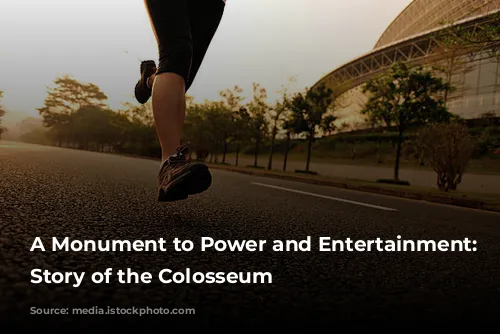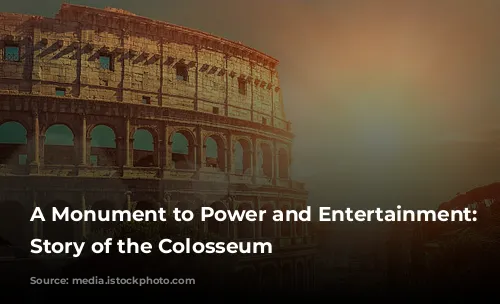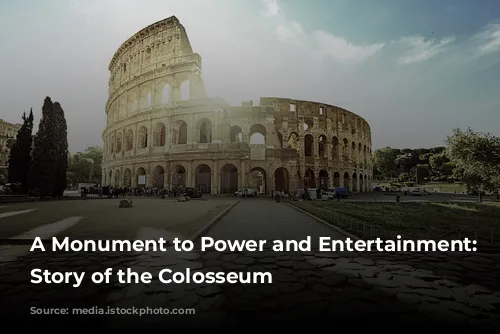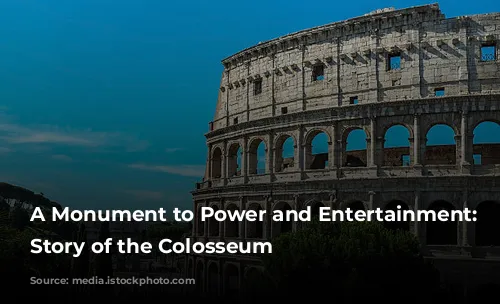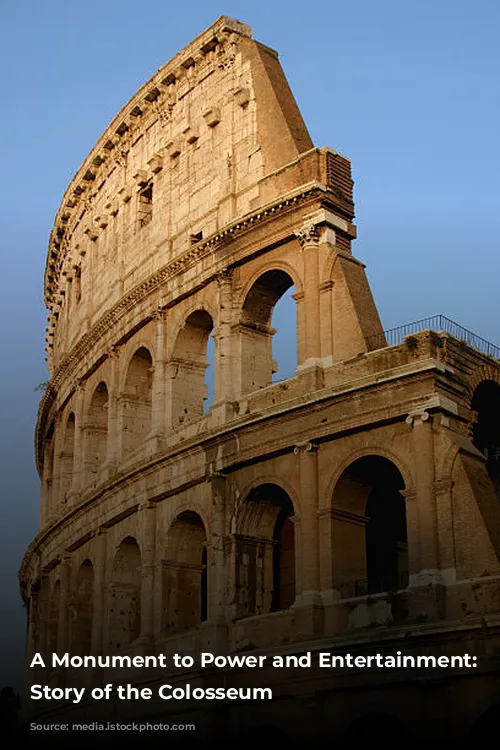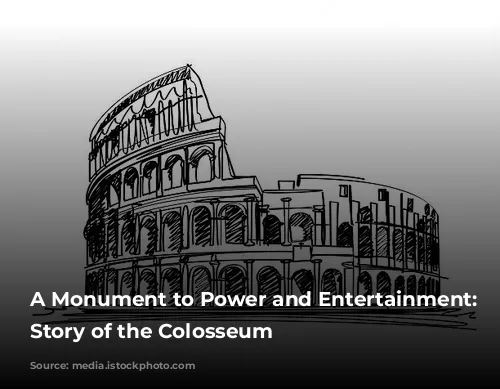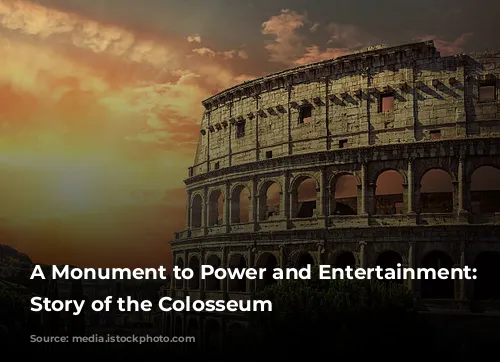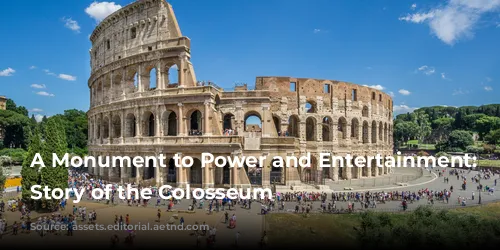The Colosseum, also known as the Flavian Amphitheater, stands as a testament to the grandeur and ingenuity of the ancient world. More than just a place of bloody entertainment, it is a powerful symbol of Roman might, a monument to a powerful dynasty, and a marvel of architecture and engineering.
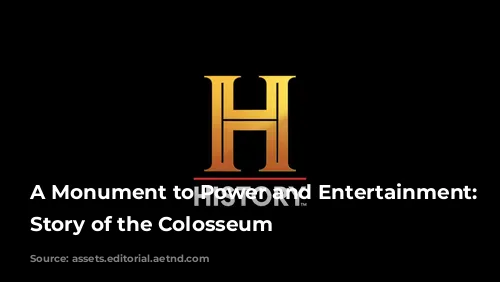
A City Rebuilt
After the tumultuous reign of Nero, Rome was in ruins. Vespasian, a general who rose to power after a civil war, established the Flavian Dynasty and began a massive rebuilding project. To symbolize Rome’s resurgence, Vespasian commissioned the construction of a new amphitheater, funded by the spoils of war from the Roman siege of Jerusalem. The Colosseum, dedicated ten years later, was a statement of power and a testament to the Flavian Dynasty’s ambition.
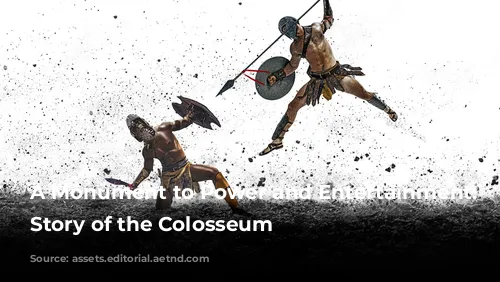
A Colossal Undertaking
The Colosseum was a groundbreaking feat of engineering. Built primarily of concrete, travertine, marble, and timber, it stood an impressive 157 feet tall, comparable to a 15-story building. It could accommodate a staggering 50,000 to 80,000 spectators, making it the largest and most complex permanent amphitheater of its time. Its construction involved the use of sophisticated techniques and materials, demonstrating the advanced capabilities of Roman engineering.
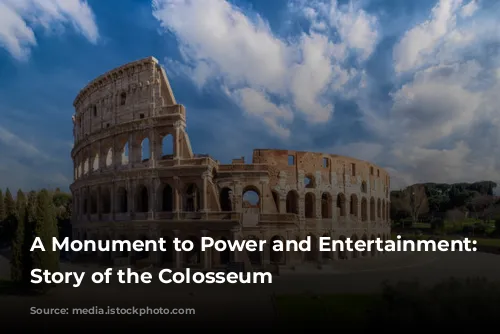
A Hierarchy of Seats
The Colosseum was not only a marvel of architecture but also a reflection of Roman social order. The seating arrangement mirrored the rigid hierarchy of Roman society. The best seats, closest to the action, were reserved for the Emperor and the elite senators. Above them sat the Equestrian order, followed by the vast majority of the population: women, foreigners, and the poor and enslaved Romans. This arrangement reinforced the social structure, with each group having their designated place within the amphitheater.
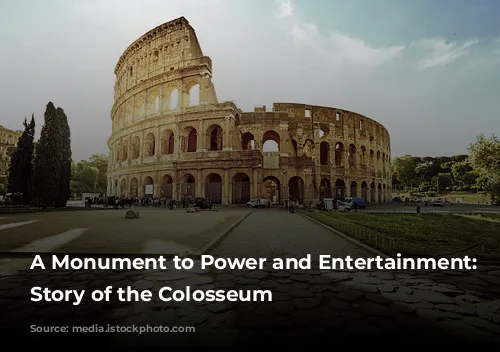
An Innovation in Concrete
The Colosseum’s greatest innovation lay in its use of concrete. The structure’s massive scale and durability were made possible by this revolutionary material. While most amphitheaters of the time were temporary wooden structures, the Colosseum was built to last, standing for over 2,000 years as a testament to the power of concrete.
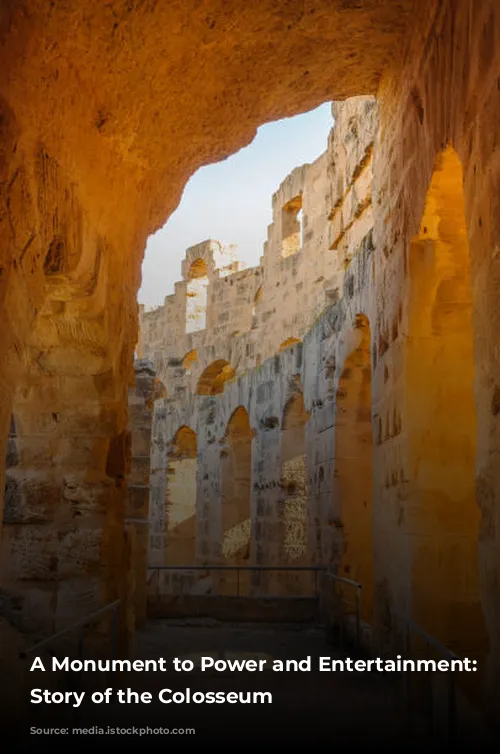
Beyond the Arena
The Colosseum was not merely a place of entertainment; it was a complex and well-designed structure. It featured a sophisticated drainage system to handle the water used in mock sea battles, a retractable awning to protect spectators from the elements, and a network of chambers and tunnels beneath the arena floor used to house props, scenery, and participants. The Colosseum was a marvel of engineering, seamlessly blending practicality and spectacle.
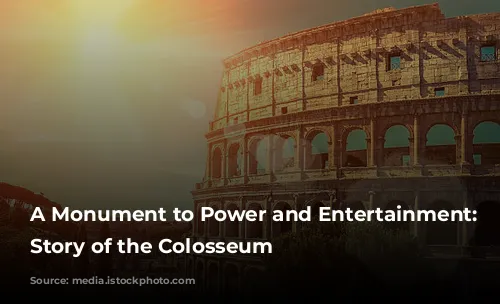
The Legacy of the Colosseum
The Colosseum’s influence extends far beyond its time. Its architectural innovations, including the use of arches, the elliptical shape, and the organized seating arrangement, have inspired modern stadiums around the world. The Colosseum stands as a timeless symbol of human ingenuity, reminding us of the power of architecture and its ability to shape society and leave a lasting legacy.
